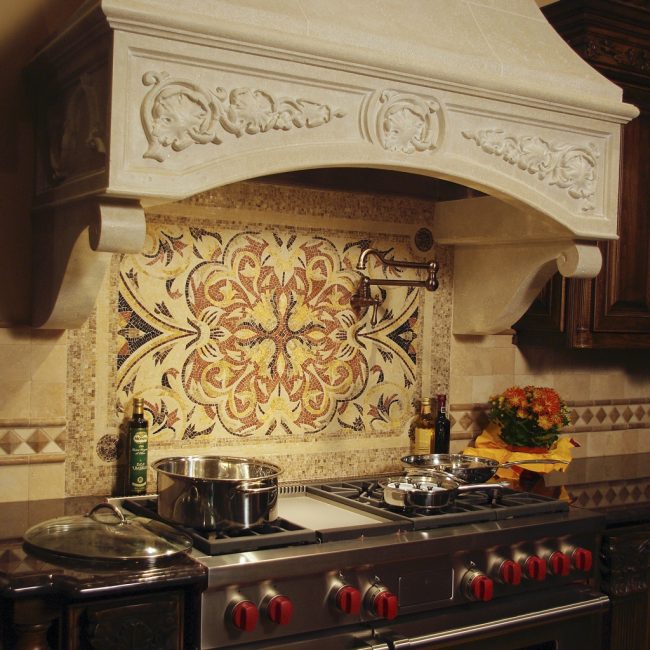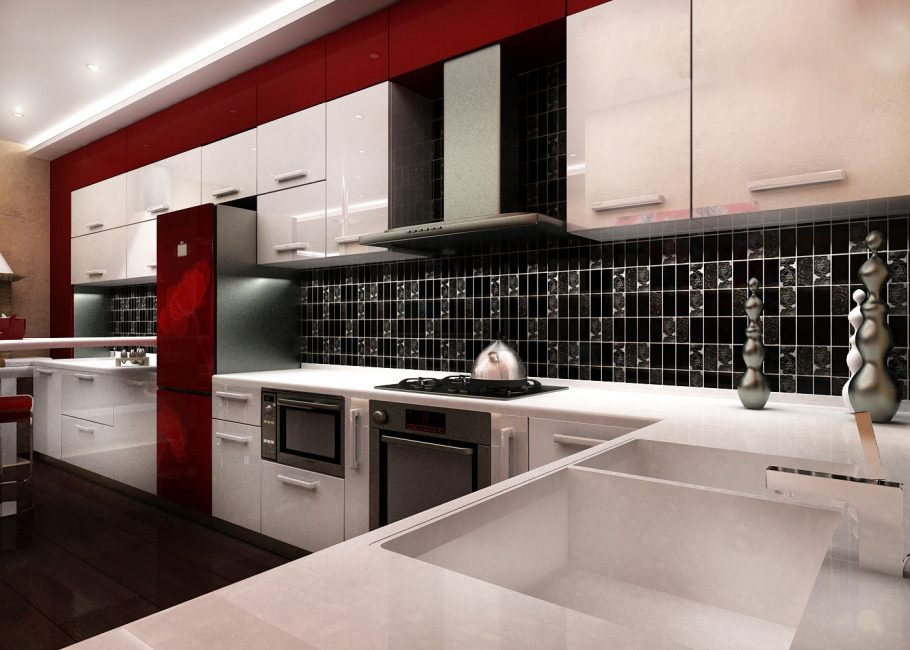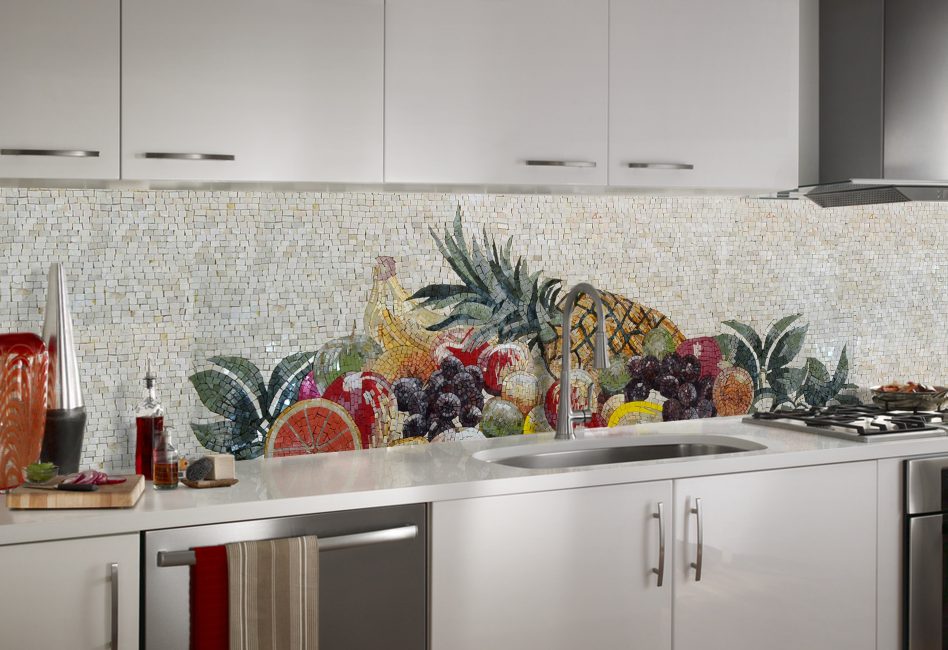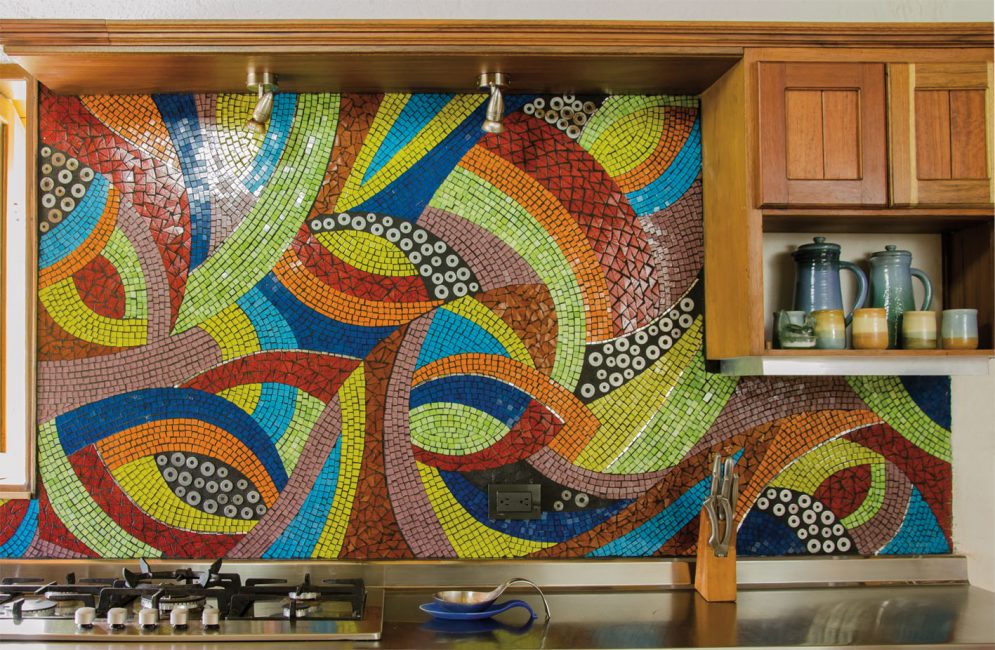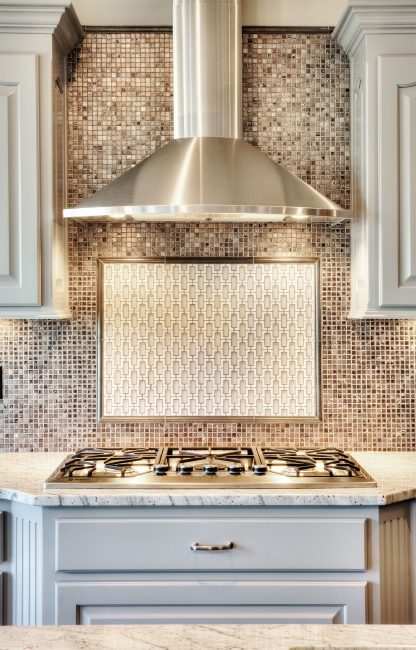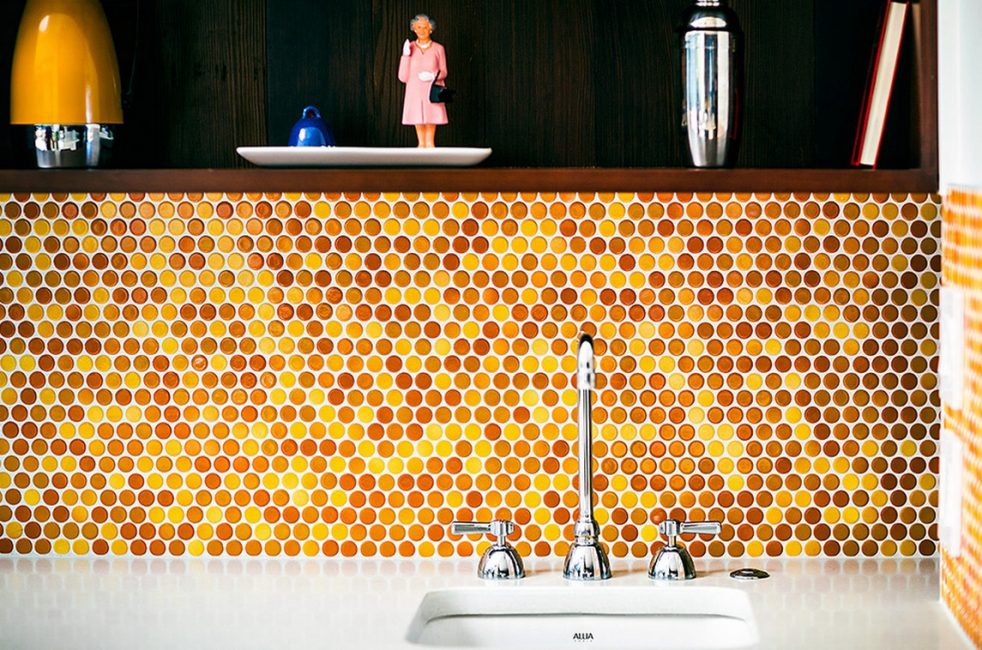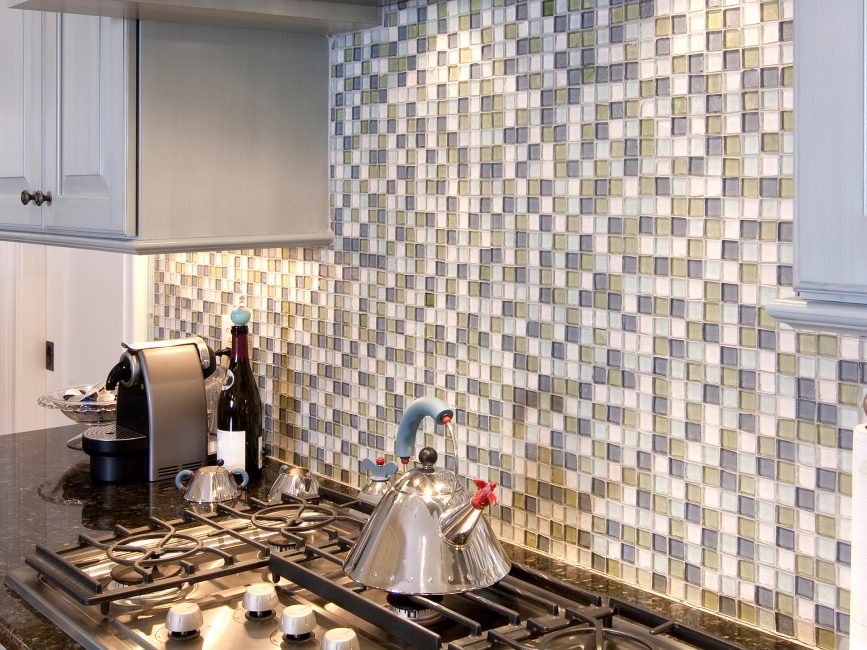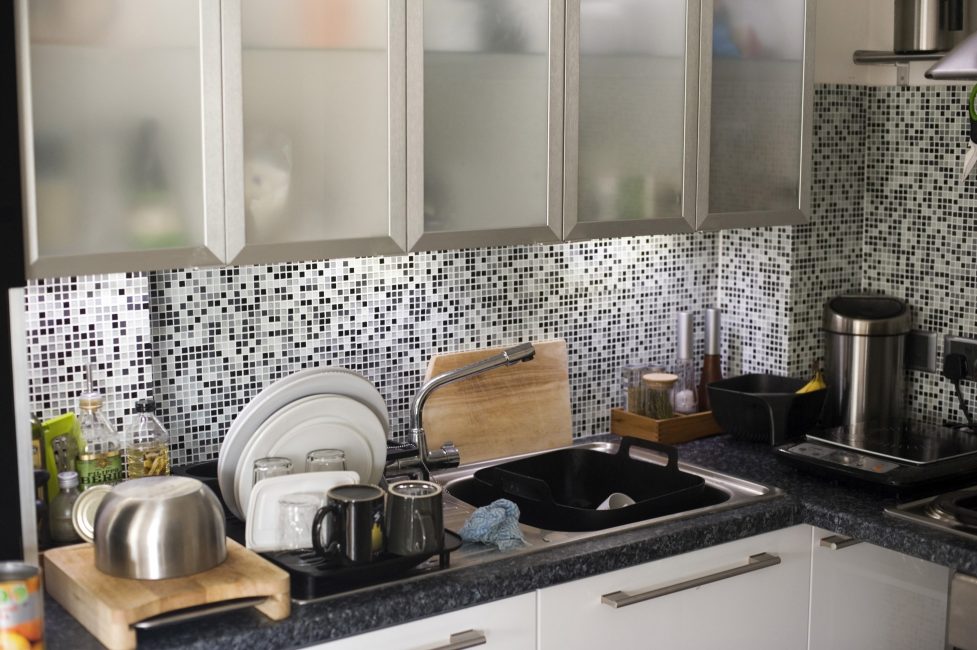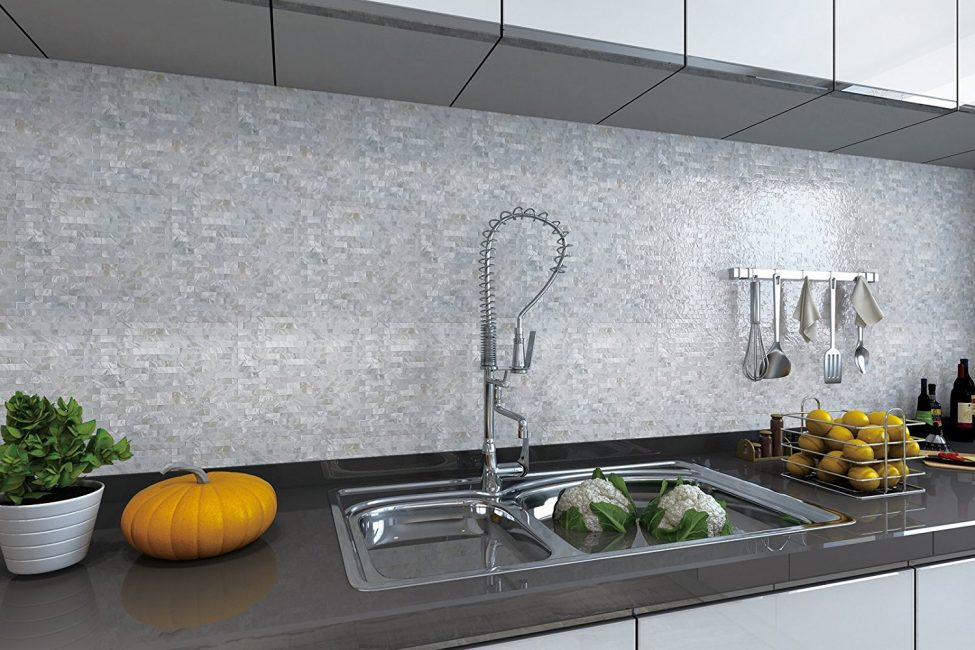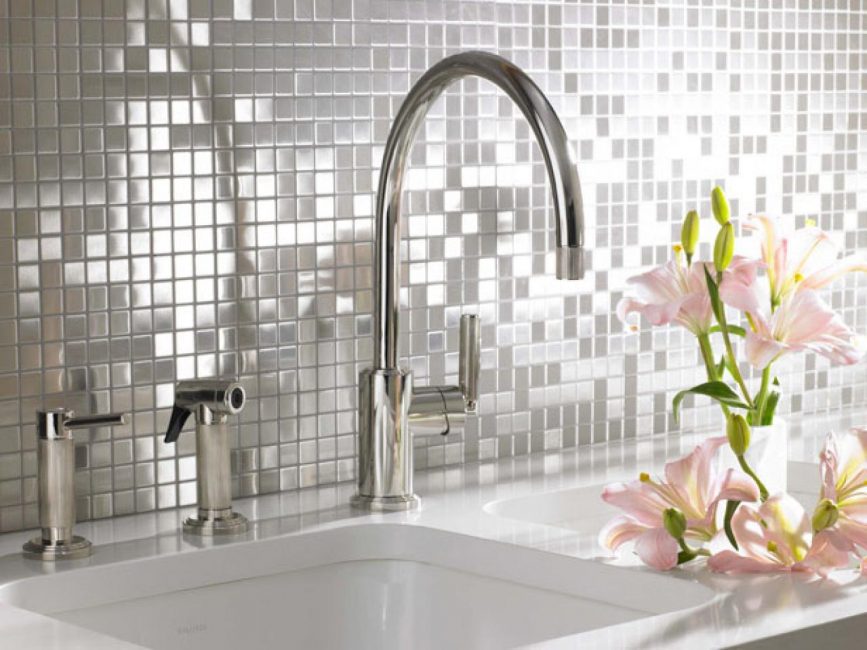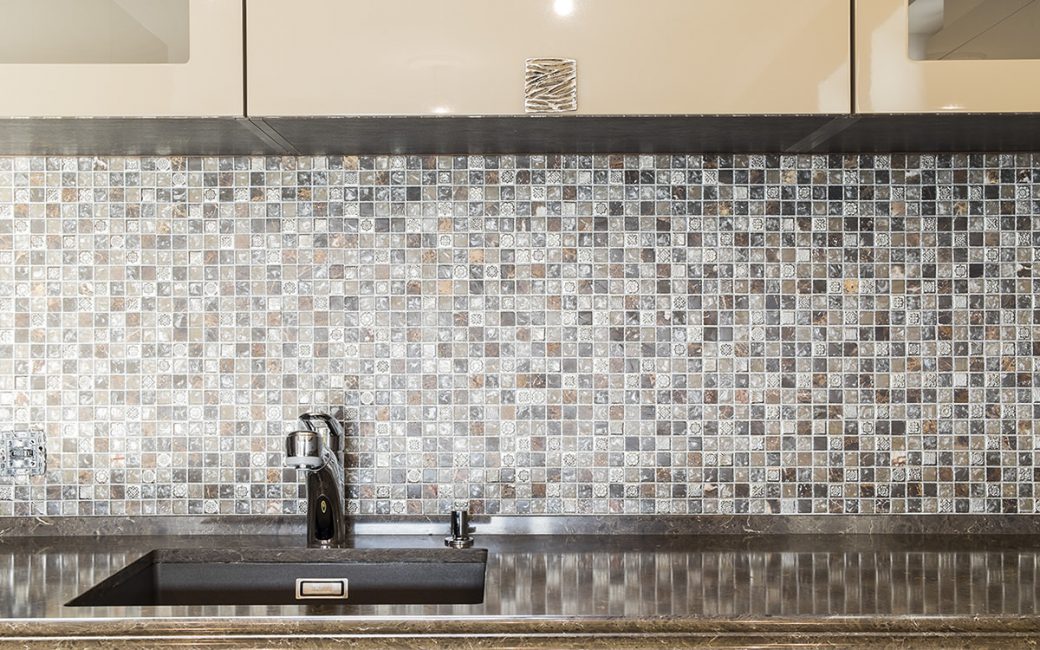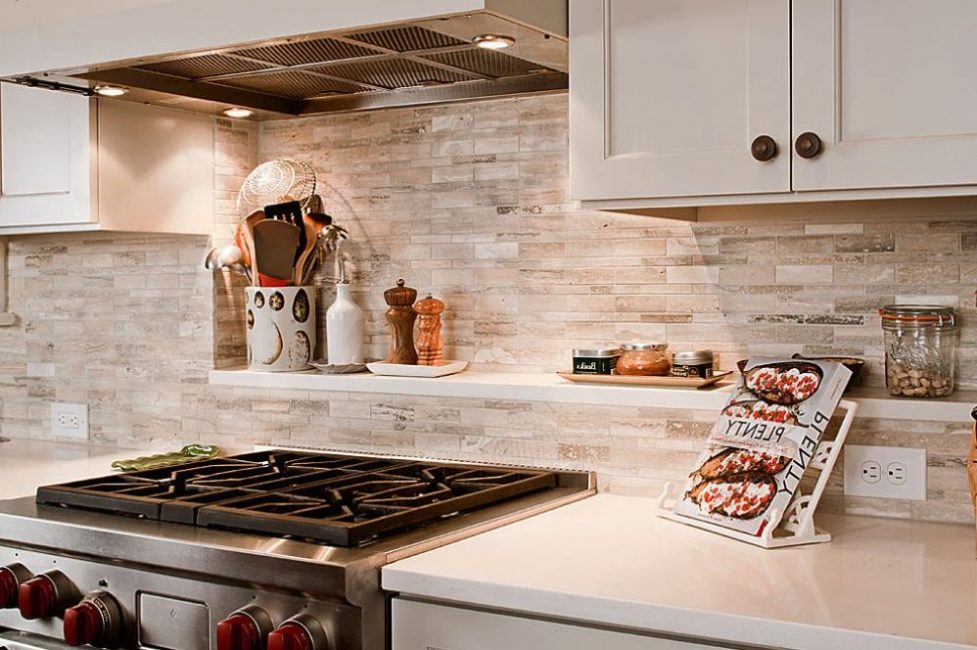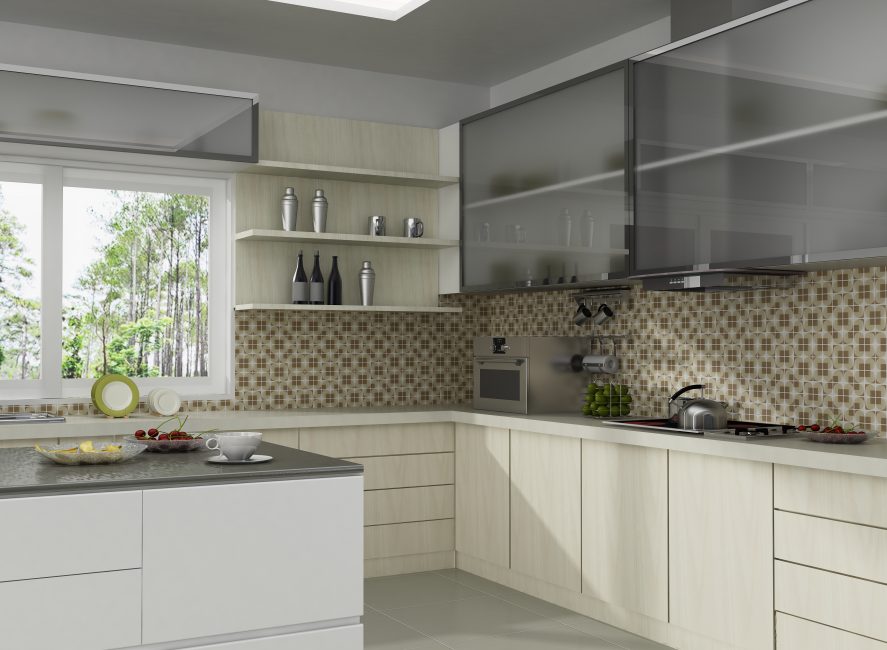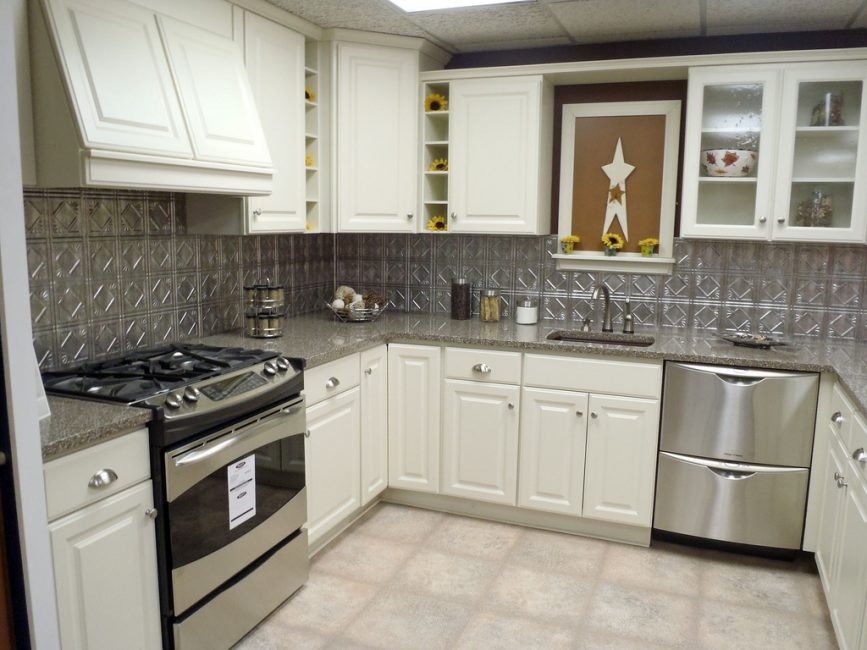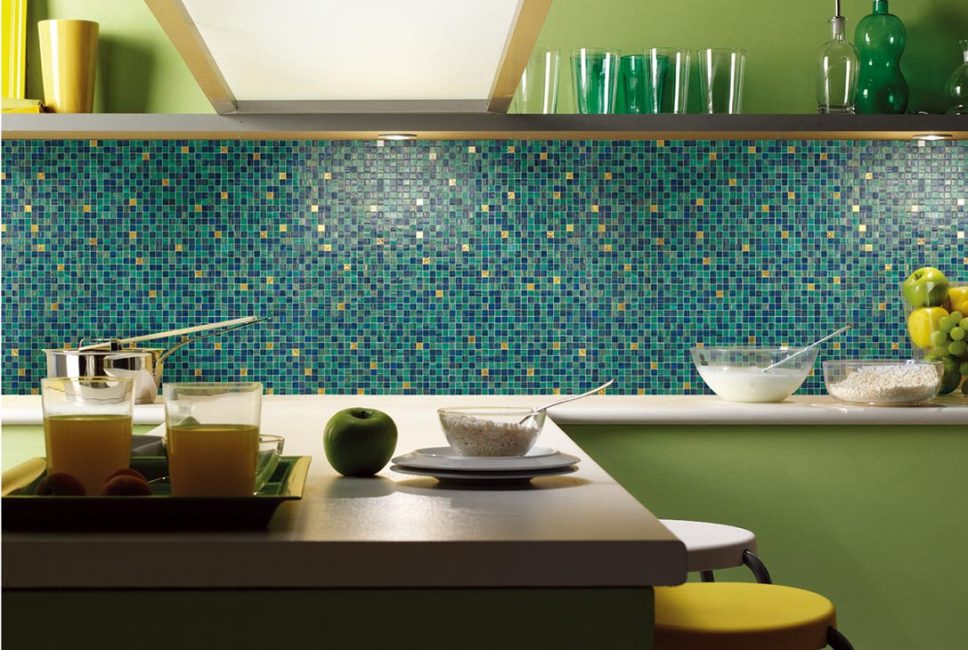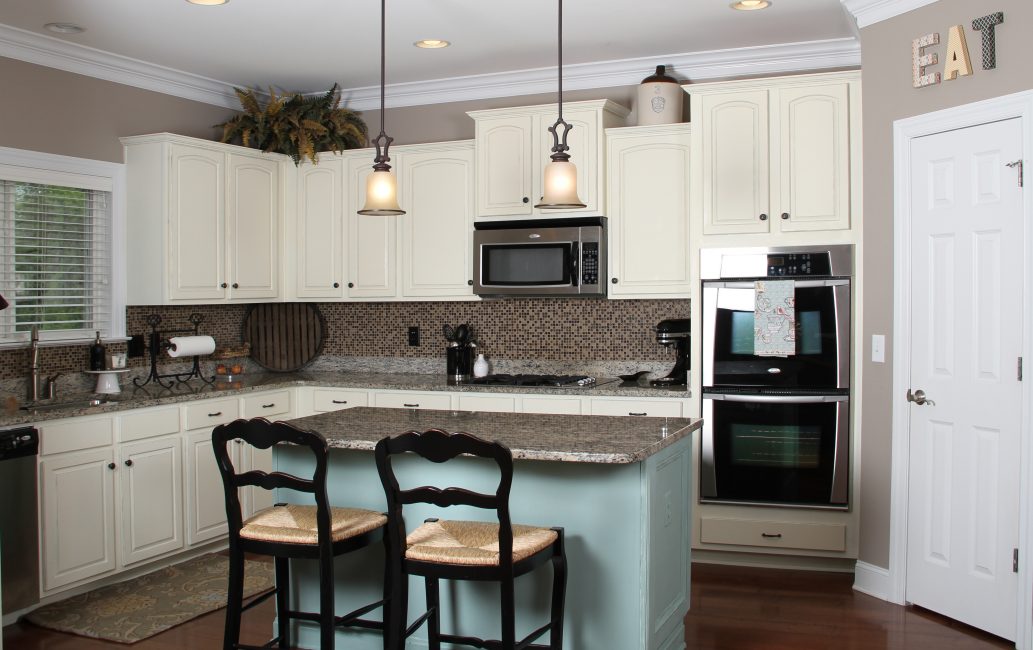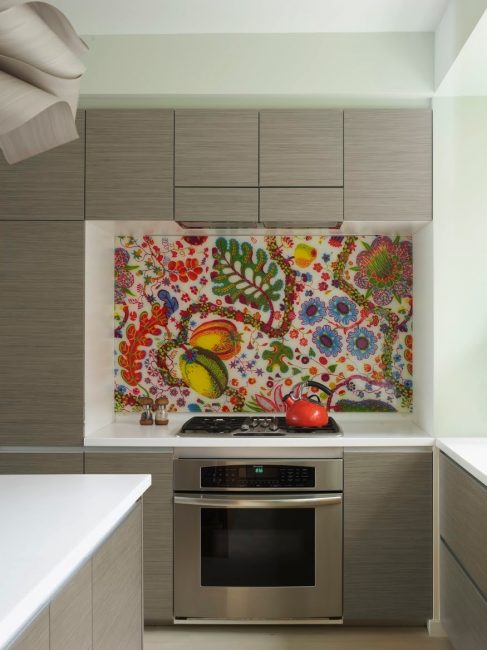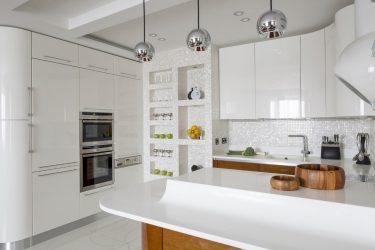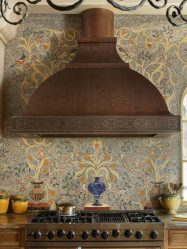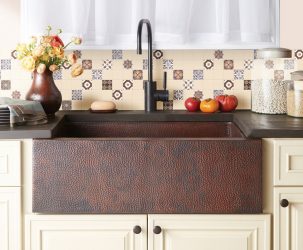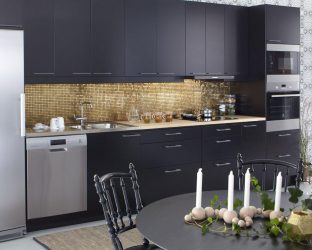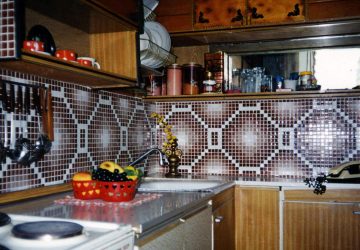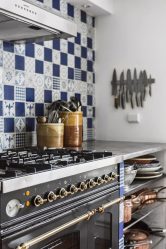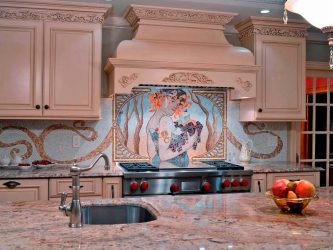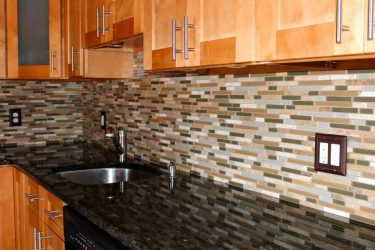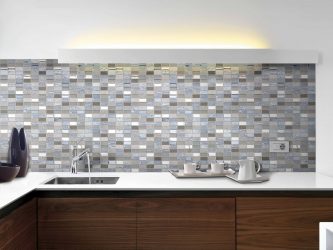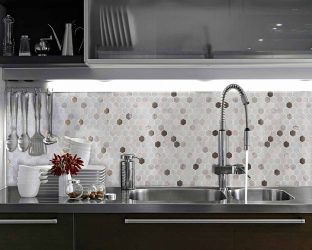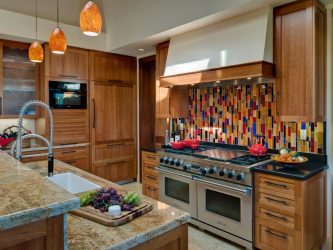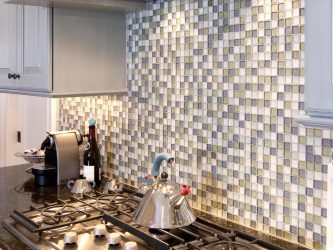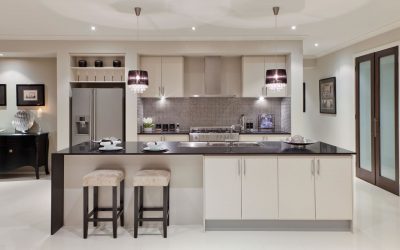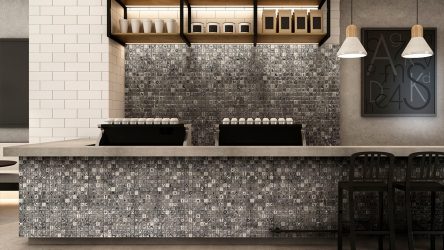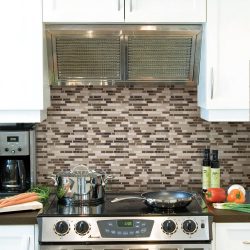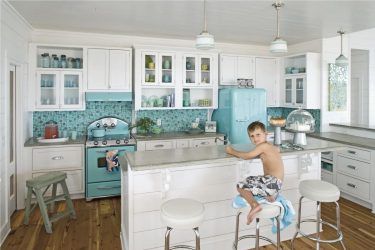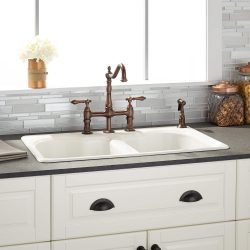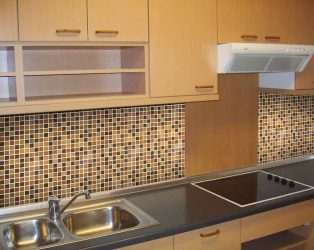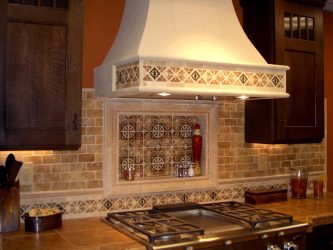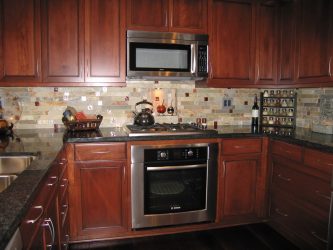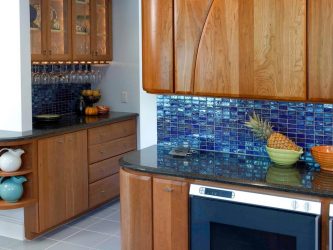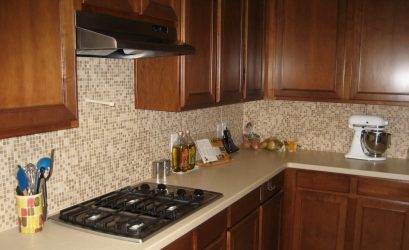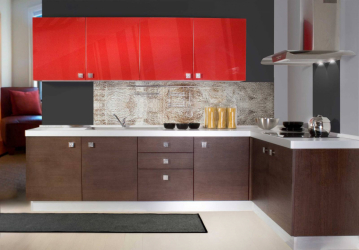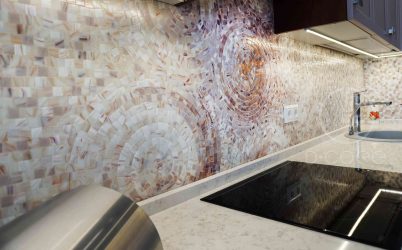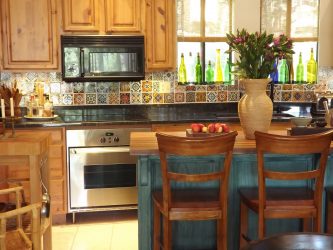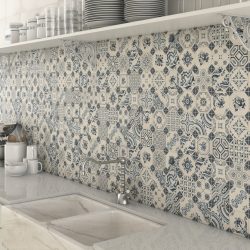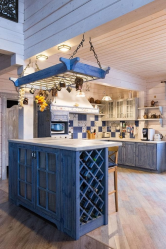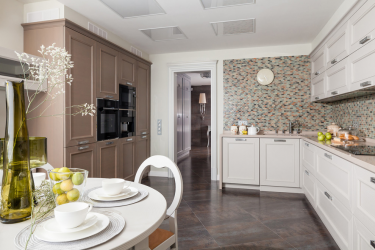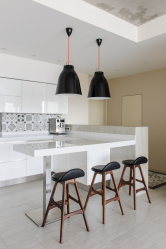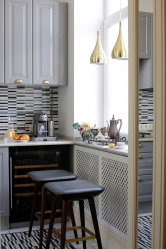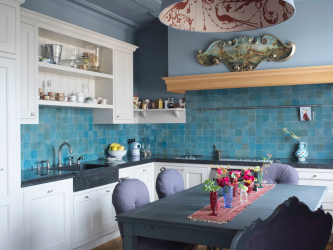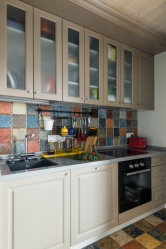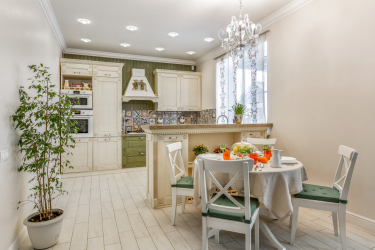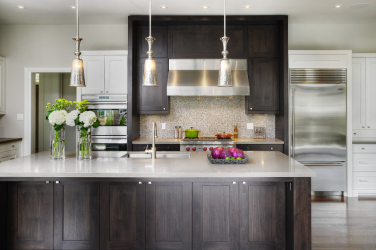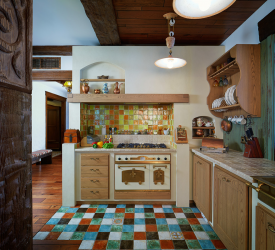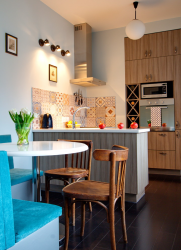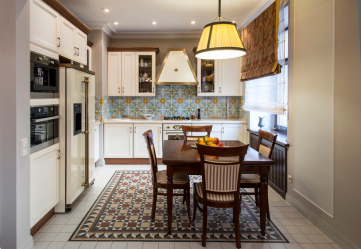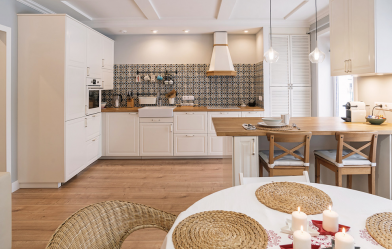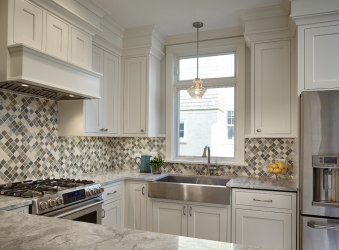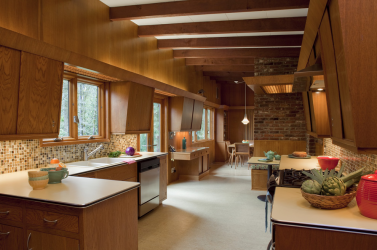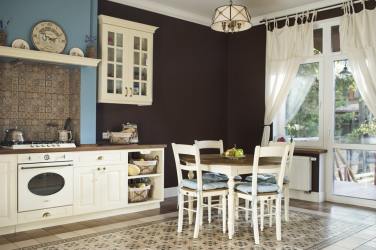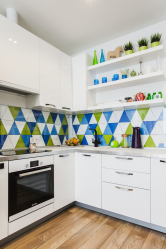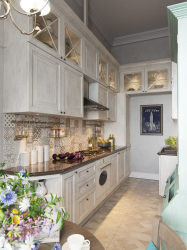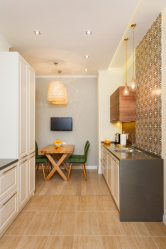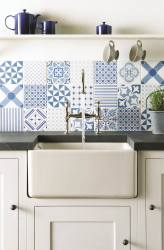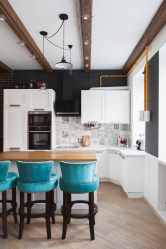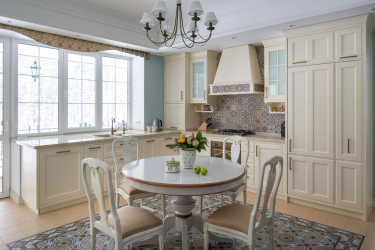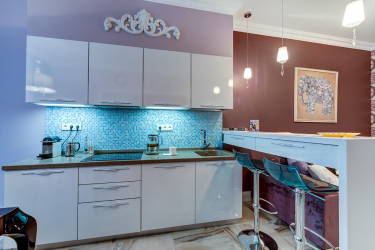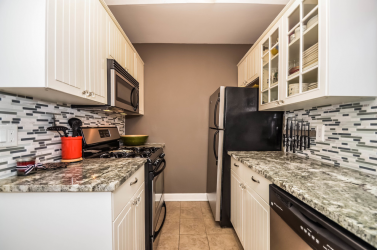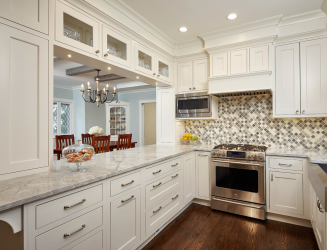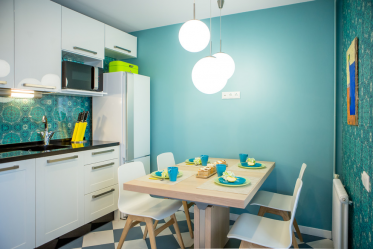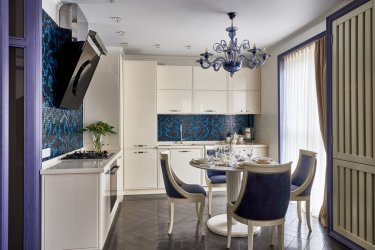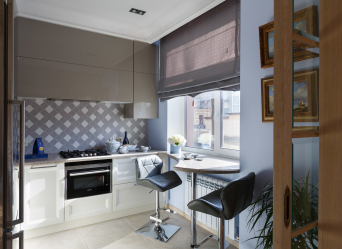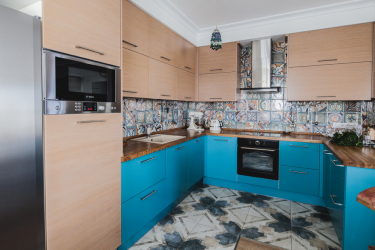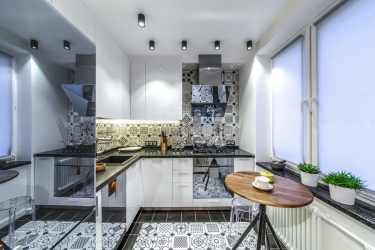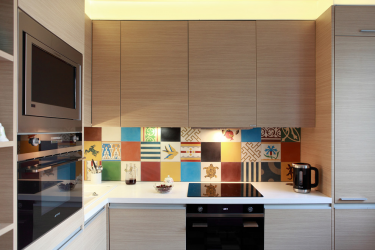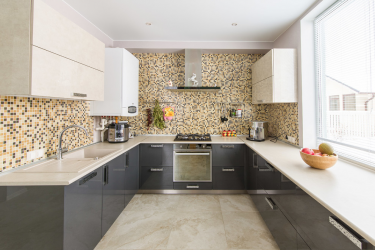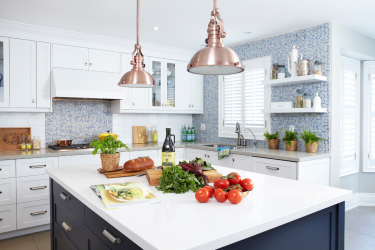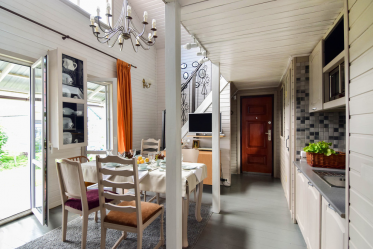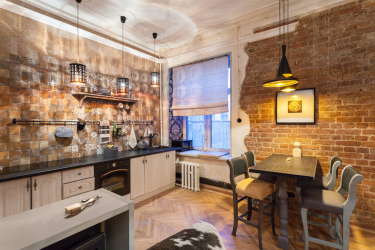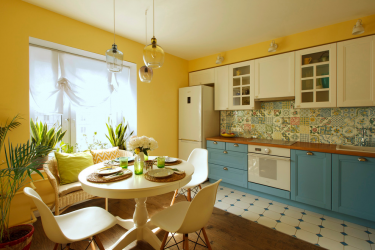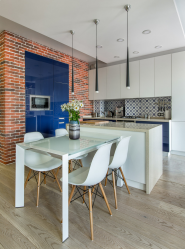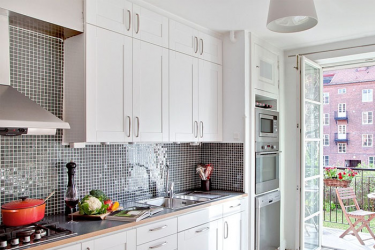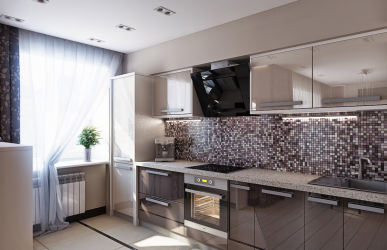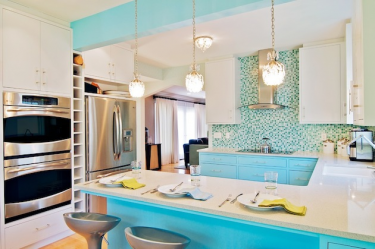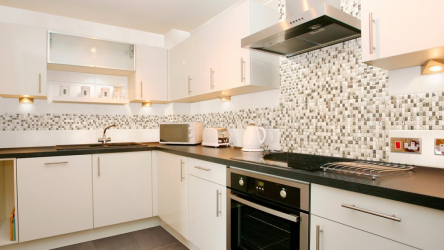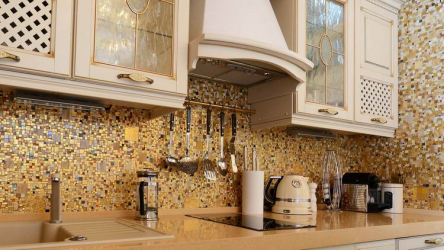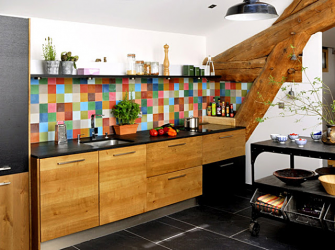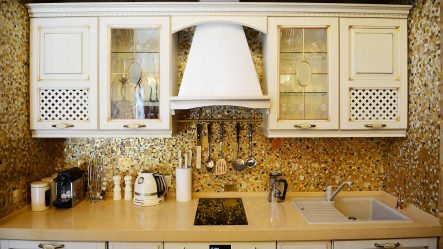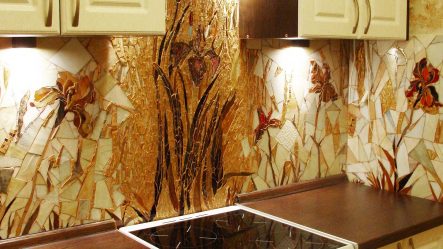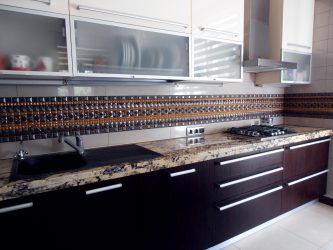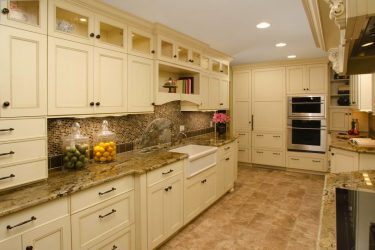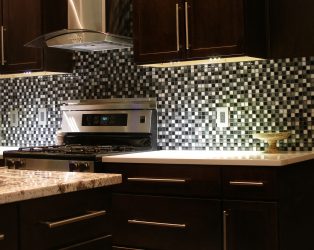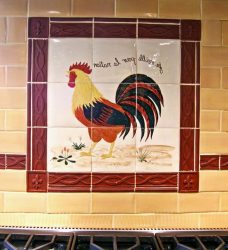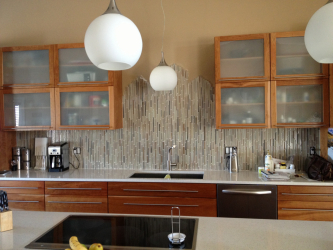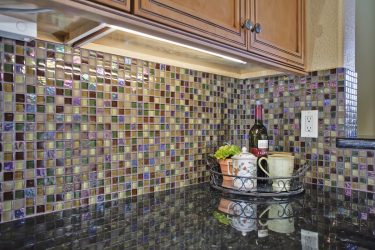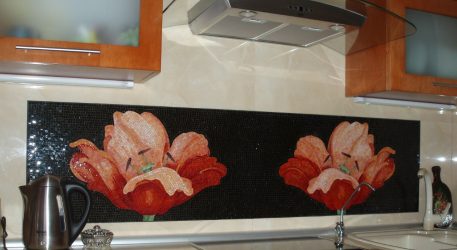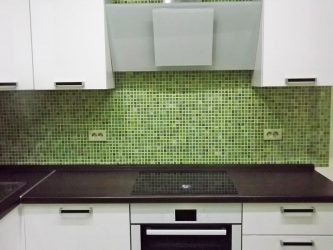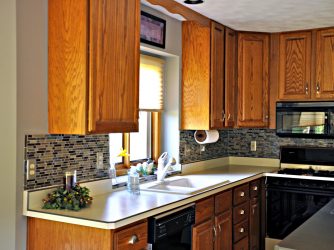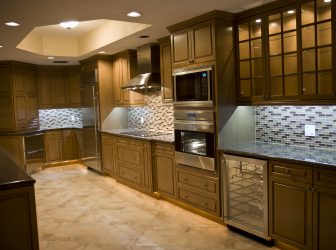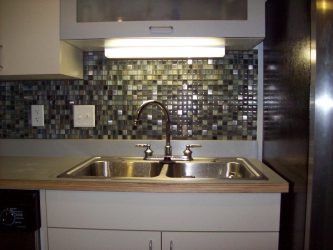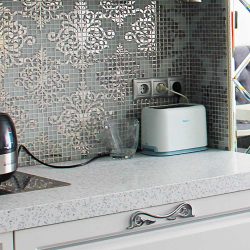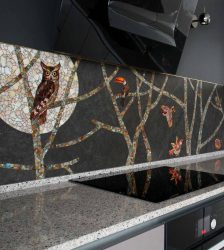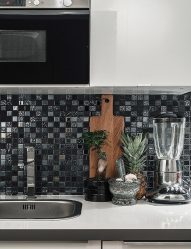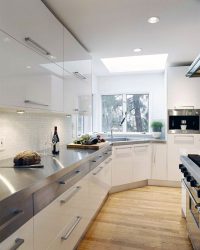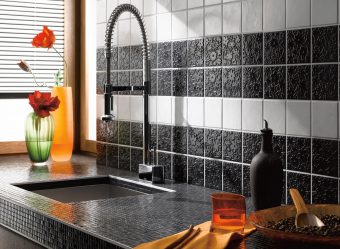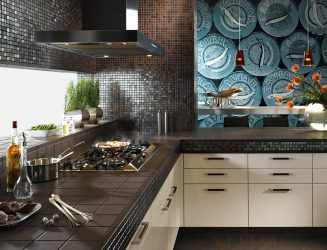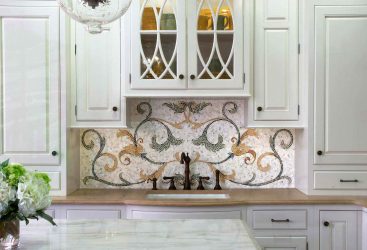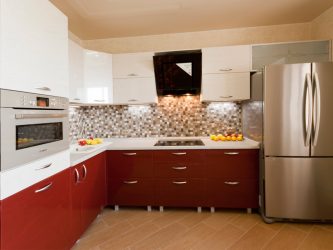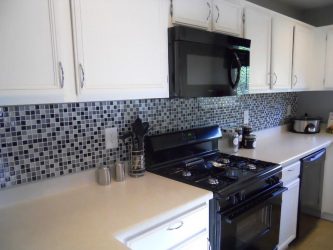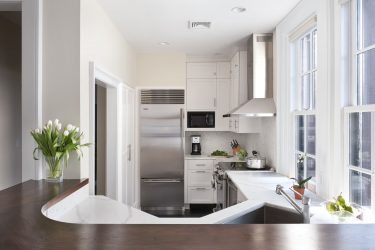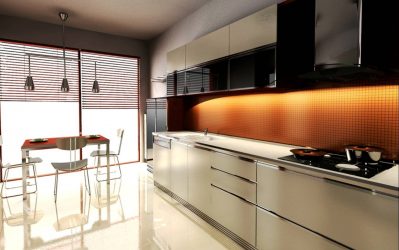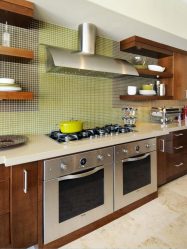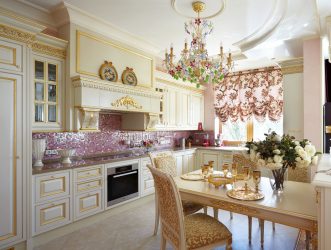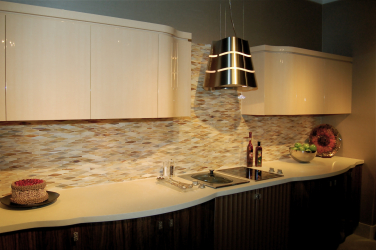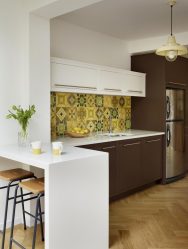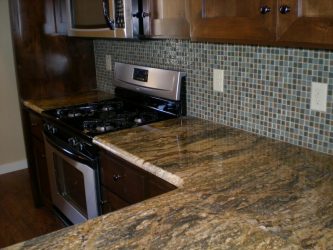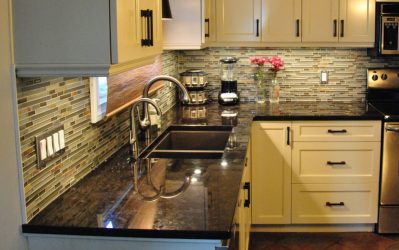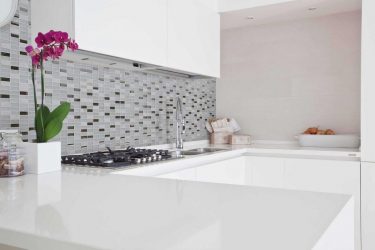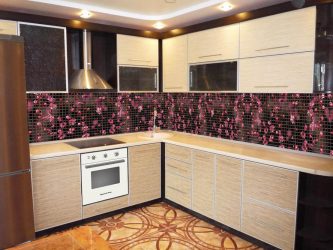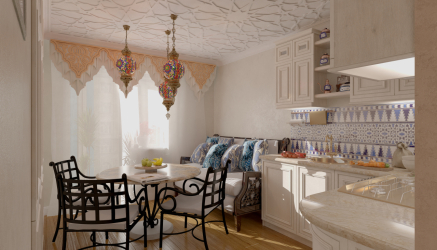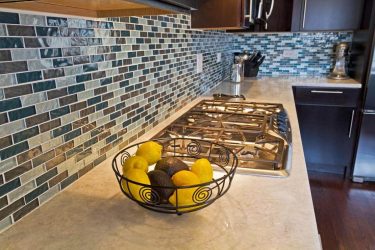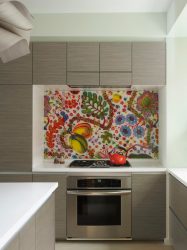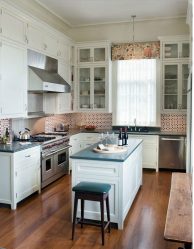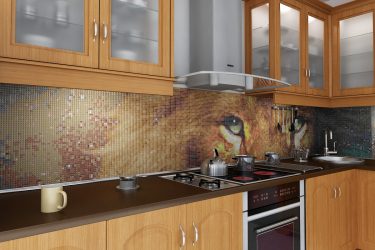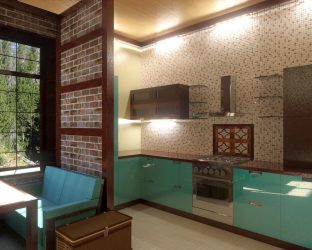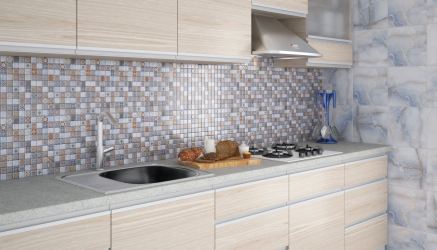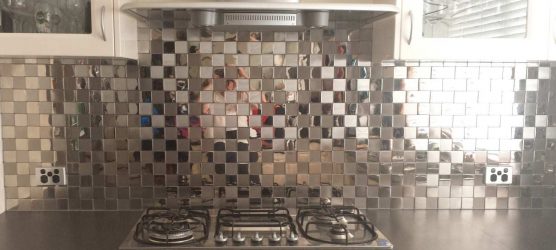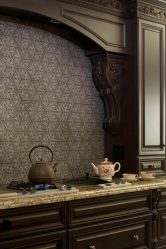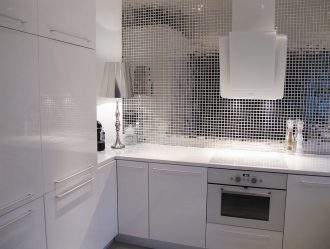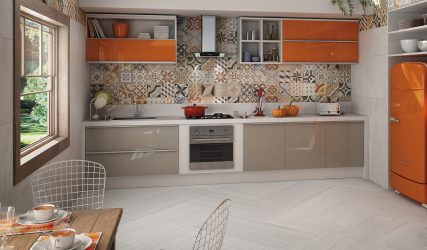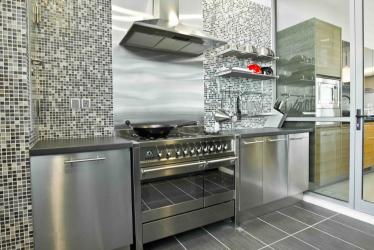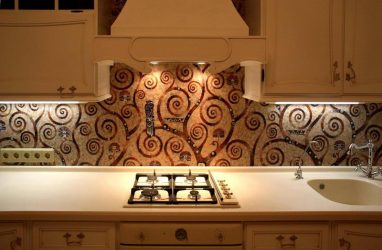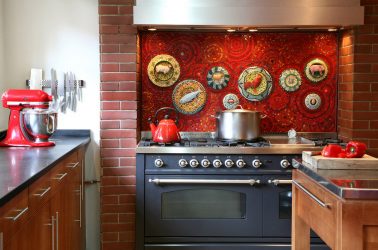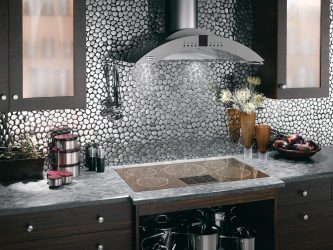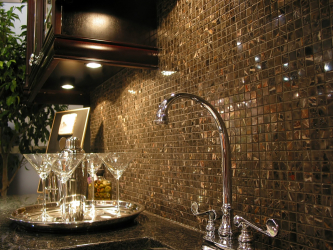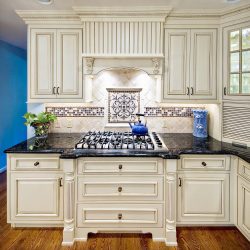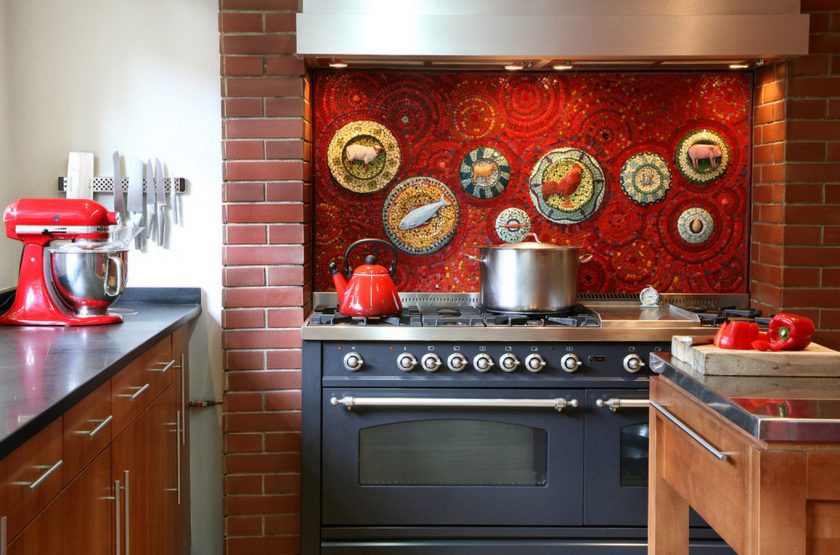
Here you will learn about the mosaic on the kitchen apron, its general properties, and the color palette. And also about the possible combination and materials for manufacturing.
Content:
General properties
Working wall on the kitchen called apron. This area is exposed to water, grease, so it is recommended laying out the apron mosaic, this is the usual tile of small size.
Usually it is not sold by separate elements, but by “matrices” - they put a assembled drawing of small components on a special base, with the size of:
can be put out
- 24 × 24 cm;
- 28 × 28 cm;
- 30 × 30 cm;
- 31.5 × 31.5 cm;
- 32 × 32 cm
The mesh fulfills the properties of the reinforcement. You can attach the finished picture to the base of the paper, the paper is glued to the front and then removed before mashing.
The elements that make up the pattern are called tessera. The chip can be from 1x1 cm to 5 × 5 cm, and sometimes up to 10 × 10 cm. To create a kitchen apron, professional builders often use briquettes 2cm × 2cm - 5cm × 5 cm.
The most convenient form is a square. This tile is practical in installation, calculation of components.
Mosaic canvas can decorate the room:
- flowers;
- abstract patterns;
- night city;
- waterfall;
- panels of vegetables and fruits;
- geometric shapes.
The fragments, from which the chips are made, look impressive in the interior, they are really suitable for a different design, from “country” to “techno”.
return to menu ↑Who is for aesthetics and practicality?
Aesthetics:
- The panel will give a working zone expressiveness, originality, zest.
- Mosaic decor sometimes becomes the main focus in design.
- Perfectly complements a single color palette.
- Fantasy, imagination, creativity will make up the picture.
Practicality:
- Easy to fit, even on uneven walls.
- Does not fade with time, does not lose an elegant look.
Benefits:
- Originality. From the fragments it is possible to lay out pictures that cannot be repeated.
- Range. The choice of colors, shape, texture for each taste.
- Coating any surface - not even flat.
- Resistance to moisture, dirt, grease, ultraviolet radiation, temperature extremes.
- Ease of maintenance. Tiles wonderfully clean.
The combination of patterns and shape
Mosaic apron is often made in bed tones or in opposite spectacular shades.
The form is different:
- square;
- a circle;
- rhombus;
- trapezium;
- oval.
Combining
There are several schemes for combining patterns so that the wall has a colorful and beautiful look:
- “Monocolor” - is made out in parts identical in form and coloring;
- mix - glass mosaic or tile is used, but the connection chips are of different shades of the same color;
- gradient or stretch - layout, similar to a rectangle, tessera laid out the transition from a rich shade to a less bright;
- ready mix - already ready matrix with a pattern is glued to the surface.
What material do you prefer in the interior?
Given the repair, the style of equipment in the kitchen, it is possible to purchase plates from different materials. We will understand them, weighing all the pros and cons.
return to menu ↑Glass
Glass for manufacturing can be:
- transparent;
- frosted;
- mother of pearl;
- with the addition of crumbs.
Steklomozaika, at the moment is a success. With proper care is not scratched, not afraid of moisture, high temperature. The interior looks just gorgeous. Transparency gives the finish depth, lightness.Availability, practicality, environmentally friendly, easy to clean, does not require special care, beautiful appearance.
Varieties for the most sophisticated taste:
- Uniform, Venetian glasses are glass chips, bright, multi-colored, or dumb, with the addition of foil, glitters and other components.
- Smalt is a mixture of glass (pressed), painted with metal oxides, such as copper, chromium, nickel, iron, silver. Saturated, spectacular, resembles an internal glow.
- Glass tile, with the addition of minerals. Minerals are added to the molten glass, for example, quartz, aventurine. It looks elegant, rich, has an iridescent surface, complex color mix.
Nacre
Very beautiful, original, unique, decorative material, which has the features to make the rays soft, diffuse, iridescent, like all colors of the rainbow.
The material for creating the matrix is the nacre of different colors and shades, but of the same thickness. The panel contains fragments from:
- malachite;
- coral;
- turquoise;
- Agatha.
And the size, the shape of the nacre blocks depends on the size of the future picture.
If the mosaic is less than 0.3 x 0.3 m, then the size of the used pieces should not exceed 5 mm. The panel looks more aesthetically pleasing, elegant, professional, when all the pieces are about the same size. Mother of pearl can be replaced with mother-of-pearl glass mosaic, it looks original, it will cost less.
return to menu ↑Ceramics
Ceramic matrix is made of baked clay, with the addition of sand and other components. By properties, it does not differ from ceramic tiles. From such a matrix is not difficult to draw a beautiful picture, it is also possible to arrange it randomly. Installation of ceramic tiles is made on tile glue, or cement-sand, with the help of this glue blocks are securely glued to the prepared surface.
This panel wins in the variety of pieces - ceramic blocks can be:
- matte;
- glossy;
- rough;
- with the effect of antiquity;
- imitating seashells;
- pebbles;
- a rock.
The ceramic layer is about 8mm - 10mm. Caring is easy, simple, withstands high temperatures, does not absorb moisture, does not lose its attractive appearance for a long time, a wide choice of color palette.
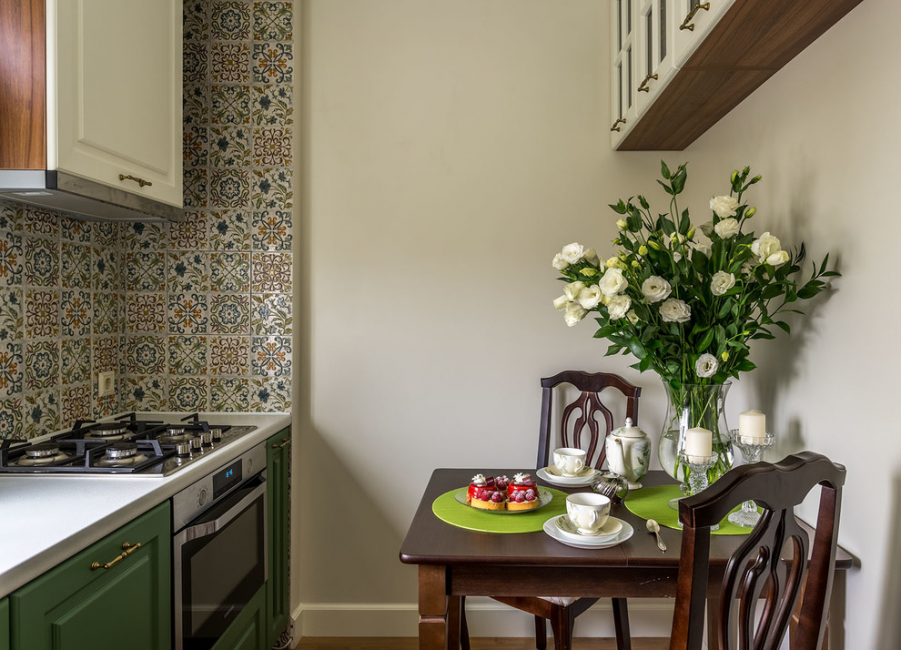
Ceramic tiles are practical, do not lose their attractive appearance for a long time and are diverse in design.
A rock
To create stone fragments, it is possible to apply a crumb of various valuable species (marble, malachite, onyx). This is a very durable material, unique, unique. The surface can be made smooth or rough, it is also treated with a substance (a rock able to absorb odors). This type of lining has a high price.
Manufacturing technology:
- Roman special technology - in the manufacture of marble used.
- Florentine technology - mixed different components.
- Russian technology - a plate of ordinary material is processed with expensive stones.
It will be interesting to you:
Porcelain stoneware
This material has the strength of a natural stone, a smooth structure, it is just as strong, but less porous, more affordable - this is an alternative to stone. The decoration is dominated by colors with beige and brown shades. Porcelain is cut, therefore, has a rough edge. Easy to clean, affordable, but the choice of colors is small.
return to menu ↑Tile
The same tile, only smaller. It looks beautiful and elegant, looks like handmade, fits well into the interior. It is resistant to temperature extremes, water, grease contamination. Disadvantage: the fragility of the plate.
return to menu ↑Metal
The chips are made of ceramics, plastic and other components, then they are covered with a metal layer in the color of gold and silver. The surface can be polished or matte. The metal panel in the interior is perfectly combined with mirror or glass tiles. Suitable for style:
- loft;
- high tech;
- avant-garde;
- Military
Minus metal: it is difficult to take care of, clean, wash it is necessary means, to prevent oxidation, darkening, scratches, visible stains from splashing water.
return to menu ↑Mirror mosaic
This view is not more than 5 mm. Beautifully looked tinted aprons with square or rectangular elements.
An interesting, unusual option - a picture of the mirror pieces. It will increase the illumination of the working area, visually expand the space, make the interior brighter, more expressive. You can arrange the mirror pieces with wood, or with a ceramic surface, creating irresistible effects of the game of textures and light, this combination looks unusual.
Disadvantage: constant cleaning of dirt, grease, streaks.
return to menu ↑Self-adhesive elements of the panel
Interesting, easy to install - self-adhesive mosaic. It looks like a tile, the thickness reaches 0.5 cm. On one side of the chip there is a decor, on the other, an adhesive base that is mounted on the wall. Easy to attach even yourself, you only need a flat wall. At installation it is necessary to be careful: it is necessary to attach the panel correctly, since it will be very difficult to separate it from the wall and re-paste it.
How to avoid mistakes? Recommendations on style design
- The size of the mosaic, like any drawing, is able to visually change the dimensions of the kitchen - large elements will reduce the space, while smaller ones will increase.
- If your kitchen is small, then do not use elements with a diamond pattern, such a pattern will reduce the size of the room.
- It looks very impressive combination of several colors on a matte or glossy surface, it is a classic way of decorating the room, which has received the most widespread use. In the installation of a simple, no need to spend time on the selection of elements, the formation of any drawings.
- Golden, silver colors create indoors taste of refinement, wealth, independence. They do not have a picture, only a single game is noted with notes of each of the elements. Such types of accessories are used in interior design.
- The complexity of laying tiles with a pattern lies in the correct selection of elements in order to get the correct pattern as a result. This finish is characterized by high aesthetics, revives the kitchen space.
- It is impossible not to mention the mirror options. They act not only as decoration, but also create a lot of visual effects: expansion of space, changing borders, accentuation. Steklomozaika will give the style a creative mood, mysteriousness, reverie, vividly highlight the artistic nature of the designer.
Successful options - glass mosaic, ceramics. With the help of these textures, you can arrange the surface perfectly and not expensive. At will it is really possible to make exclusive expensive pictures. Quite affordable kitchen apron made of pieces of metal. The remaining combinations of components have a high price.
How bright, exquisite color palette, the higher its price. Monocolors, mixes of light, gray, beige, brown, white shades without any decorative additives are an inexpensive combination. If bright, flashy colors dominate, with shimmering effects, such combinations are expensive.
Mosaic is an element of decor that is currently experiencing a rebirth, not bad enough! Varieties of matrices have taken a worthy place in the interior of the kitchen. The variety of colors, textures, shapes, materials used surprises the taste of even experienced designers.
Kitchen Aprons
Choosing a mosaic
